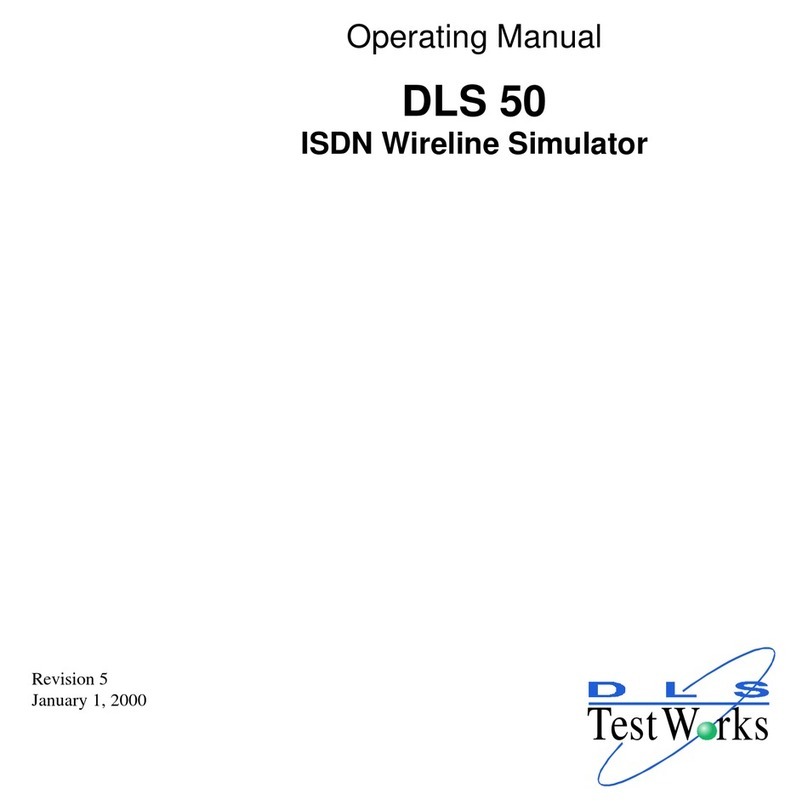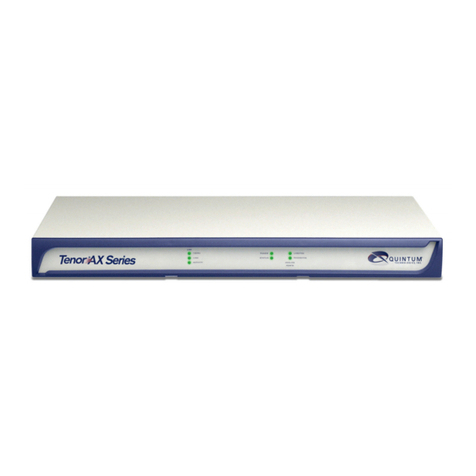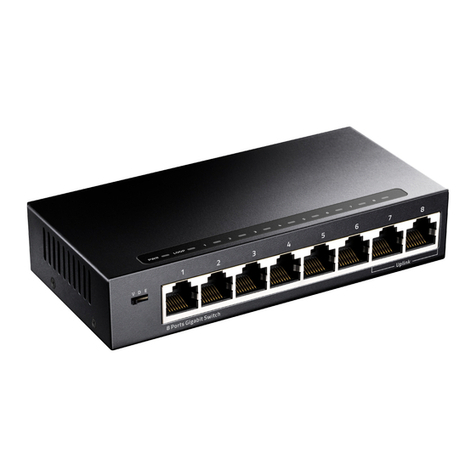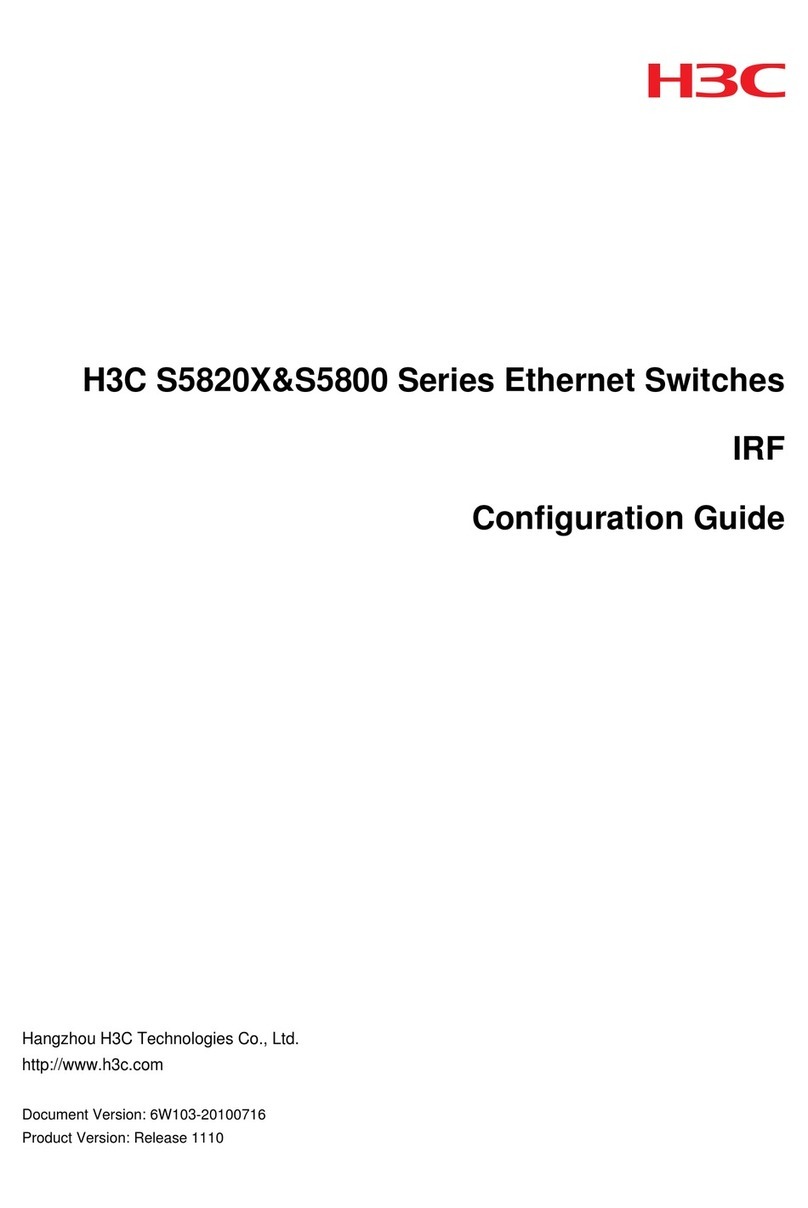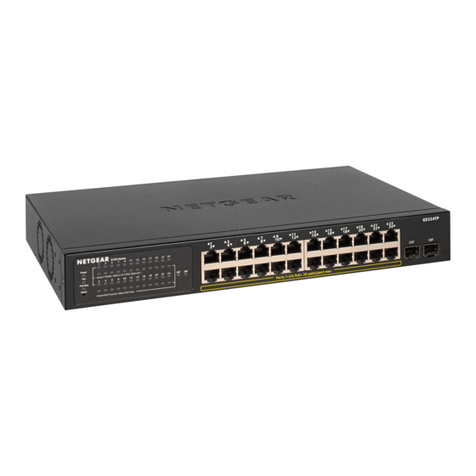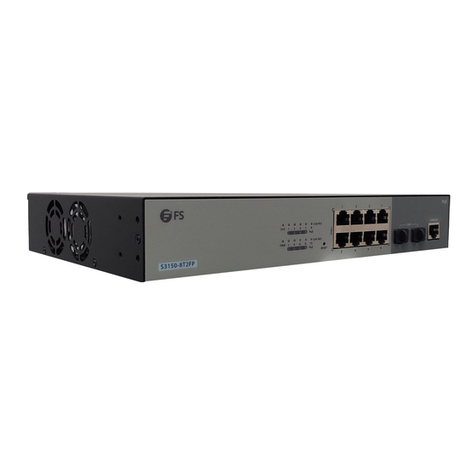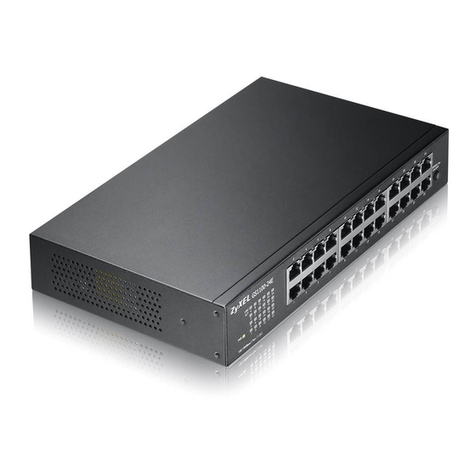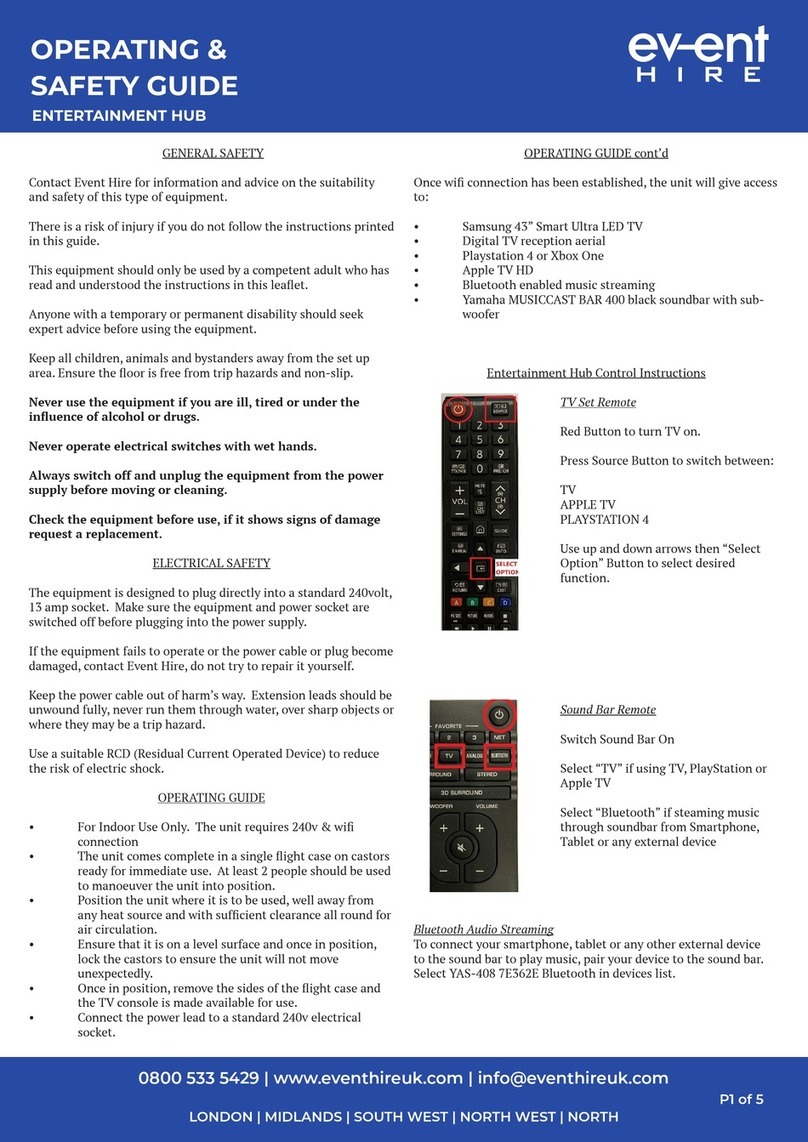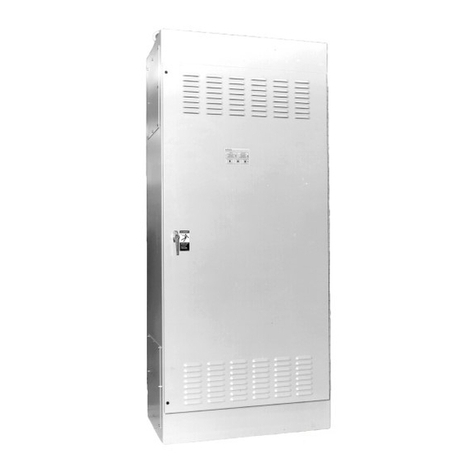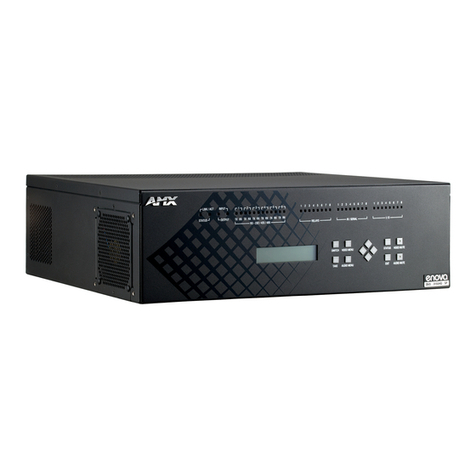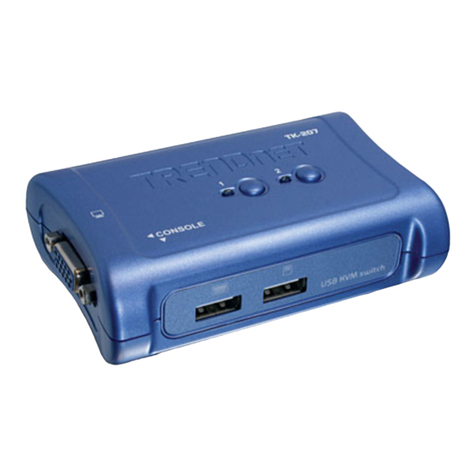DLS DLS 400A User manual

Revision 0
21 September 1999
Te s t W r k s
Operatin
g
Manual
DLS 400A/H/N/HN
Wireline Simulator


DLS 400 Operating Manual
Page iii
Table of Contents
1. INTRODUCTION .................................................................................................1
1.1 About the DLS 400 ADSL Wireline Simulator ....................................................1
1.2 About this Manual .................................................................................................2
2. QUICK START ......................................................................................................3
3. GETTING STARTED .........................................................................................4
3.1 Receiving and Unpacking the Unit .......................................................................4
3.2 Hardware and Software Requirements ..................................................................4
3.3 DLS 400 Front and Rear Panels ............................................................................5
3.4 Digital Connections ...............................................................................................6
3.5 Analog connections ...............................................................................................7
3.6 RJ–45 Adapter .......................................................................................................8
3.7 LEDs ...................................................................................................................... 8
3.8 Connecting Power to the DLS 400 ........................................................................9
3.9 DLS 400 Self-Test .................................................................................................9
3.10 National Instruments GPIB Card and Software Installation ...............................9
3.10.1 Installing National Instruments GPIB Software
(IEEE 488 operation only) ..........................................................................10
3.10.2 Installing the GPIB–PCII/IIA Card (IEEE 488 operation only) ................10
3.10.3 How to Check if the NI card is installed properly ......................................12
4. DLS 400 SOFTWARE ........................................................................................13
4.1 Overview .............................................................................................................13
4.2 Software Installation ...........................................................................................13
4.3 Initial Screen .......................................................................................................13
4.3.1 Changing Communications Mode ................................................................14
4.4 Unit Configuration ..............................................................................................15
4.5 Main Control Screen ...........................................................................................16
4.5.1 Loading and Saving Settings ........................................................................17
4.5.1.1 Loading Standards Impairments Settings ......................................................18
4.6 Impairments Control Panel ..................................................................................19
4.6.1 Editing Impairments Screen ..........................................................................20
4.6.2 Edit Longitudinal Voltage (Common Mode Impairments) ...........................23
4.7 Impulse Control ...................................................................................................24

DLS 400 Operating Manual
Page iv
4.8 Operating Two or More Units from the 400 Series Concurrently .......................24
5. SYSTEM DESCRIPTION ...............................................................................25
5.1 DLS 400 Description ...........................................................................................25
5.2 DLS 400 Unit Loopset Configurations ...............................................................26
5.3 Loop Descriptions ...............................................................................................28
5.3.1 CSA Loops ....................................................................................................28
5.3.2 ANSI Loops ...................................................................................................31
5.3.3 EIA Loops .....................................................................................................34
5.3.4 Variable Loops ..............................................................................................35
5.3.5 Reversing Loops ............................................................................................36
6. ADSL NOISE GENERATOR DESCRIPTION ......................................38
6.1 General ................................................................................................................38
6.2 Grouped Impairments ..........................................................................................38
6.2.1 Basic Rate Testing, ANSI T1.E1 T1.601 standard ........................................39
6.2.2 HDSL Rate Testing, ANSI Technical Report on HDSL ................................39
6.2.3 HDSL2 Rate Testing, ANSI Proposed Working Draft for
HDSL2 Standard (T1E1.4/98–268) ..............................................................39
6.2.4 ADSL Rate Testing, ANSI T1.413, Issue I and II ..........................................40
6.2.5 ADSL Rate Testing, ITU Standard for G.lite ................................................40
6.2.6 Basic Rate Testing, ETSI TS 102 080 ISDN Standard ..................................40
6.2.7 HDSL Rate Testing, ETSI TS 101 135 HDSL Standard ...............................41
6.2.8 European ADSL rate testing, ETSI ETR 328 ADSL Standard ......................41
6.3 Individual Impairments .......................................................................................41
6.4 Impairment Card Organization ............................................................................46
6.5 Output Stage ........................................................................................................47
6.6 Crosstalk Generators A and B .............................................................................48
6.7 Crosstalk Generator C .........................................................................................49
6.8 Shaped Noise Generator ......................................................................................50
6.9 Flat White Noise Generator .................................................................................50
6.10 Impulse Generator .............................................................................................50
6.11 External Noise ...................................................................................................52
6.12 Powerline Related Impairments ........................................................................52
6.12.1 Metallic Noise .............................................................................................53
6.12.2 Longitudinal Noise ......................................................................................53
6.12.3 DLS 200 Mode Crosstalk and White Noise ................................................55

DLS 400 Operating Manual
Page v
7. REMOTE CONTROL ......................................................................................56
7.1 IEEE 488 Interface ..............................................................................................56
7.1.1 DLS 400 IEEE 488 Address. .........................................................................57
7.1.2 The Service Request (SRQ) Line ...................................................................57
7.1.3 Resetting the DLS 400 ..................................................................................58
7.1.4 Message Terminators ....................................................................................58
7.1.5 Example using the IEEE 488 Interface .........................................................59
7.2 RS–232 Serial Interface ......................................................................................60
7.2.1 Message Terminators ....................................................................................60
7.2.2 Example using the RS–232 Interface ............................................................61
7.3 Data formats ........................................................................................................61
7.4 Command Syntax ................................................................................................62
8. REMOTE CONTROL: COMMON COMMAND SET ......................64
8.1 Status Reporting ..................................................................................................69
8.1.1 Status Byte Register (STB) ............................................................................69
8.1.2 Event Status Register (ESR) ..........................................................................70
8.2 DLS 400 Synchronization ...................................................................................71
9. REMOTE CONTROL: DEVICE DEPENDENT COMMANDS ....73
9.1 Device Dependent Command Set for Loops .......................................................73
9.1.1 :SETting:CHANnel:LOOP <Loop Name> ..................................................74
9.1.2 :SETting:CHANnel:TAP_A <NRf> ..............................................................77
9.1.3 :SETting:CHANnel:LINE <NRf> .................................................................77
9.1.4 SETting:CHANnel:TAP_B <NRf> ...............................................................78
9.1.5 :SETting:CHANnel:DIRection FORward|REVerse .....................................79
9.1.6 :SETting:CHANnel:BYpass <NO|YES> ......................................................79
9.1.7 :SETting:PWRline:LONGitudinal:STate <OFF/ON> .................................79
9.2 Device Dependent Command Set for Impairments .............................................80
9.2.1 Impairments Commands Summary ...............................................................80
9.2.2 Crosstalk Generator A ..................................................................................81
9.2.2.1 XTalk Generator A – Type ...........................................................................81
9.2.2.2 Xtalk Generator A – Level ..........................................................................81
9.2.2.3 Xtalk Generator A – Program ......................................................................81
9.2.3 Crosstalk Generator B ..................................................................................82
9.2.3.1 Xtalk Generator B – Type ............................................................................82
9.2.3.2 Xtalk Generator B – Level ...........................................................................82

DLS 400 Operating Manual
Page vi
9.2.3.3 Xtalk Generator B – Program ......................................................................82
9.2.4 Crosstalk Generator C ..................................................................................82
9.2.4.1 Xtalk Generator C – Type ............................................................................82
9.2.4.2 Xtalk Generator C – Level ...........................................................................83
9.2.4.3 Xtalk Generator C – Program ......................................................................83
9.2.5 Shaped Noise Generator ...............................................................................83
9.2.5.1 Shaped Noise Generator – Type ...................................................................83
9.2.5.2 Shaped Noise Generator – Level ..................................................................84
9.2.5.3 Shaped Noise Generator – Program ..............................................................84
9.2.6 White Noise Generator .................................................................................84
9.2.6.1 Flat White Noise Generator – State ..............................................................84
9.2.6.2 Flat White Noise Generator – Level .............................................................84
9.2.7 Impulses ........................................................................................................85
9.2.7.1 Impulses – Type .........................................................................................85
9.2.7.2 Impulses – Width ........................................................................................85
9.2.7.3 Impulses – Level ........................................................................................85
9.2.7.4 Impulses – Rate ..........................................................................................85
9.2.7.5 Impulses – Single Shot ................................................................................86
9.2.8 Powerline Related Impairments ...................................................................86
9.2.8.1 Metallic Noise Sine Wave Generators ...........................................................86
9.2.8.1.1 Harmonic #1 Frequency ............................................................................86
9.2.8.1.2 Harmonic #2 Frequency ............................................................................86
9.2.8.3 Longitudinal Noise Triangle Wave Generator ................................................87
9.2.9 Quiet .............................................................................................................87
9.2.10 Output Stage ...............................................................................................88
10. CHARACTERISTICS OF FIXED LOOPS ...........................................89
10.1 CSA Loops ........................................................................................................90
10.1.1 CSA Loop #1 ...............................................................................................90
10.1.2 CSA Loop #2 ...............................................................................................92
10.1.3 CSA Loop #3 ...............................................................................................94
10.1.4 CSA Loop #4 ...............................................................................................96
10.1.5 CSA Loop #5 ...............................................................................................98
10.1.6 CSA Loop #6 .............................................................................................100
10.1.7 CSA Loop #7 .............................................................................................102
10.1.8 CSA Loop #8 .............................................................................................104
10.1.9 Extended-CSA Loop #9 .............................................................................106
10.1.10 Extended-CSA Loop #10 .........................................................................108

DLS 400 Operating Manual
Page vii
10.1.11 Mid-CSA Loop #0 ................................................................................... 110
10.1.12 Mid-CSA Loop #1 ................................................................................... 112
10.1.13 Mid-CSA Loop #2 ................................................................................... 114
10.1.14 Mid-CSA Loop #3 ................................................................................... 116
10.1.15 Mid-CSA Loop #4 ................................................................................... 118
10.1.16 Mid-CSA Loop #5 ...................................................................................120
10.1.17 Mid-CSA Loop #6 ...................................................................................122
10.2 ANSI Loops .....................................................................................................124
10.2.1 ANSI Loop #1 ............................................................................................124
10.2.2 ANSI Loop #2 ............................................................................................126
10.2.3 ANSI Loop #3 ............................................................................................128
10.2.4 ANSI Loop #4 ............................................................................................130
10.2.5 ANSI Loop #5 ............................................................................................132
10.2.6 ANSI Loop #6 ............................................................................................134
10.2.7 ANSI Loop #7 ............................................................................................136
10.2.8 ANSI Loop #8 ............................................................................................138
10.2.9 ANSI Loop #9 ............................................................................................140
10.2.10 ANSI Loop #11 ........................................................................................142
10.2.11 ANSI Loop #12 ........................................................................................144
10.2.12 ANSI Loop #13 ........................................................................................146
10.2.13 ANSI Loop #15 ........................................................................................148
10.2.14 Mid-ANSI Loop #7 ..................................................................................150
10.3 EIA Loops .......................................................................................................152
10.3.1 EIA Loop #1 ..............................................................................................152
10.3.2 EIA Loop #2 ..............................................................................................154
10.3.3 EIA Loop #3 ..............................................................................................156
10.3.4 EIA Loop #4 ..............................................................................................158
10.3.5 EIA Loop #5 ..............................................................................................160
11. CHARACTERISTICS OF IMPAIRMENTS ......................................162
11.1 Noise shapes produced by Generators A & B .................................................162
11.2 Noise shapes produced by Generator C ...........................................................168
12. TROUBLESHOOTING ...............................................................................173
13. REFERENCES ................................................................................................175

DLS 400 Operating Manual
Page viii
14. WARRANTY ....................................................................................................177
15. SHIPPING THE DLS 400 ...........................................................................179
16. SPECIFICATIONS ........................................................................................180
16.1 General ............................................................................................................180
16.2 Simulated loops ...............................................................................................180
16.2.1 DLS 400 Unit Configurations ...................................................................180
16.2.1 Description ...............................................................................................182
16.3 Impairments Card ............................................................................................183
16.3.1 White Noise Generator .............................................................................183
16.3.2 NEXT Generators A and B .......................................................................184
16.3.3 NEXT Generator C ...................................................................................185
16.3.4 Multi Tone Generator ...............................................................................185
16.3.5 Impulses ....................................................................................................186
16.3.6 Powerline Related Metallic Noise ............................................................186
16.3.7 Longitudinal Noise ....................................................................................186
16.3.8 Externally Generated Signals ...................................................................186
16.4 Mechanical ......................................................................................................187
16.5 IEEE 488 Remote Control ...............................................................................187
16.6 RS–232 Remote Control .................................................................................187
16.7 Included ...........................................................................................................188
16.8 Options ............................................................................................................188
16.9 Electrical ..........................................................................................................188
16.9.1 AC Power ..................................................................................................188
16.9.2 On Simulated Wireline ..............................................................................188
16.10 Environmental ...............................................................................................189
16.11 Physical ..........................................................................................................189
16.12 Operating Conditions ....................................................................................189
17. SAFETY ..............................................................................................................190
17.1 Information ......................................................................................................190
17.1.1 Protective Grounding (Earthing) ..............................................................190
17.1.2 Before Operating the Unit ........................................................................190
17.1.3 Power Supply Requirements .....................................................................191
17.1.4 Main Fuse Type ........................................................................................191

DLS 400 Operating Manual
Page ix
17.1.5 Connections to a Power Supply ................................................................191
17.1.6 Operating Environment ............................................................................191
17.1.7 Class of Equipment ...................................................................................191
17.2 Instructions ......................................................................................................191
17.2.1 Before Operating the Unit ........................................................................192
17.2.2 Operating the Unit ....................................................................................192
17.3 Symbols ...........................................................................................................193
APPENDIX A. INTERPRETATION OF LEVEL UNITS ....................195
APPENDIX B. DLS 200 MODE ......................................................................198
APPENDIX C. MEASUREMENTS ...............................................................199
C.1 Measurement of Wireline Simulators ...............................................................199
C.2 Common Errors ................................................................................................200
APPENDIX D. NOISE GENERATOR CONNECTIONS ....................201
APPENDIX E. COMMONLY ASKED QUESTIONS ............................204
APPENDIX F. PROGRAM EXAMPLE .......................................................206
F.1 Downloadable Crosstalk Noise .........................................................................206
F.2 Captured Programming Commands ..................................................................210

DLS 400 Operating Manual
Page x
Table of Figures
Figure 3.1 DLS 400 Front Panel ....................................................................................5
Figure 3.2 DLS 400 Back Panel .....................................................................................6
Figure 3.3 DLS 400 Internal Connection Paths .............................................................8
Figure 4.1 Initial Screen ...............................................................................................14
Figure 4.2 Main Control Screen ...................................................................................15
Figure 4.3 System Configuration Screen .....................................................................15
Figure 4.4 Control Screen showing CSA Loop #4 .......................................................16
Figure 4.5 Load Impairments Combination from Standards ........................................18
Figure 4.6 Impairments Control Panel .........................................................................19
Figure 4.7 Editing Impairments Screen ........................................................................21
Figure 4.8 Edit Longitudinal Voltage ...........................................................................23
Figure 4.9 Impulse Control Screen ...............................................................................24
Figure 6.1 System Configuration Screen .....................................................................38
Figure 6.2 Loading all impairments .............................................................................42
Figure 6.3 Impairments combinations ..........................................................................42
Figure 6.4 Impairment Generators Block Diagram ......................................................47
Figure 6.5 Cook Pulse ..................................................................................................51
Figure 6.6 ADSL Impulse c1 .......................................................................................51
Figure 6.7 ADSL Impulse c2 .......................................................................................52
Figure 6.8 ANSI Longitudinal Load Configuration .....................................................54
Figure 6.9 ETSI Longitudinal Load Configuration ......................................................54
Figure 11.1 T1.601 NEXT ...........................................................................................162
Figure 11.2 DSL NEXT ...............................................................................................162
Figure 11.3 HDSL NEXT ............................................................................................163
Figure 11.4 HDSL + ADSL NEXT ..............................................................................163
Figure 11.5 T1.413 II EC ADSL upstream NEXT .......................................................164
Figure 11.6 T1.413 II EC ADSL upstream FEXT (9 kft 26 AWG) .............................164
Figure 11.7 T1.413 II FDM ADSL upstream NEXT/
ITU-T NA ADSL Upstream NEXT ..........................................................165
Figure 11.8 ITU-T NA FDM ADSL Downstream FEXT ............................................165
Figure 11.9 ITU-T NA ADSL Upstream FEXT ..........................................................166
Figure 11.10 HDSL2 downstream NEXT (H2TUC) .....................................................166
Figure 11.11 HDSL2 upstream NEXT (H2TUR) ..........................................................167
Figure 11.12 ITU-T Euro-K or Kirkby noise .................................................................167
Figure 11.13 ADSL FEXT (T1.413, Issue I & II) ..........................................................168
Figure 11.14 Model A ....................................................................................................168

DLS 400 Operating Manual
Page xi
Figure 11.15 Model B ....................................................................................................169
Figure 11.16 T1 NEXT (Original DLS 400A shape) .....................................................169
Figure 11.17 International AMI .....................................................................................170
Figure 11.18 T1. 413 II T1 (AMI) NEXT/ITU-T NA T1 (AMI) NEXT/
HDSL2 T1 (AMI) NEXT ..........................................................................170
Figure 11.19 T1.413 II EC ADSL downstream NEXT ..................................................171
Figure 11.20 HDSL2 EC ADSL downstream NEXT ....................................................171
Figure 11.21 T1.413 II FDM ADSL downstream FEXT (9kft 26 AWG) .....................172
Figure 11.22 ITU-T NA FDM ADSL downstream NEXT/HDSL2 FDM ADSL down-
stream NEXT/T1.413 II FDM ADSL downstream NEXT 172


INTRODUCTION
Page 1
1. INTRODUCTION
Thank you for choosing DLS TestWorks (Consultronics).
DLS TestWorks (Consultronics) has been in the wireline simulation business for over 20
years now. Since the days of the S2, DLS TestWorks (Consultronics) has designed many
new units to customers’ specifications and to conform to an ever-growing range of stand-
ards. With the introduction of the DLS 100 in 1985 we sold the world’s first truly wide-
band wireline simulator to successfully simulate attenuation, characteristic impedance and
delay.
1.1 About the DLS 400 ADSL Wireline Simulator
The DLS 400 simulates twisted pair copper cables, sometimes called wirelines, to high
frequencies. It provides over 30 different configurations of these cables. It is particularly
suitable for testing Asymmetrical Digital Subscriber Loop (ADSL) transmission products,
but can be used to test many other digital transmission products as well. The DLS 400
loop configurations address various testing requirements, depending on the model chosen
(A, H, N or HN):
The DLS 400A offers all the ADSL test loops specified by ANSI T1.413 and a collection
of other HDSL and ISDN test loops.
The DLS 400H offers all the loops necessary for testing to ANSI HDSL and HDSL2 spec-
ifications.
The DLS 400N offers all the loops necessary for testing to North American ADSL specifi-
cations, covering both ANSI and ITU G.lite loops. It also includes 5 TR 30.3 loops for
evaluating the interaction of DSL modems and voiceband products.
The DLS 400HN combines the loops of both the DLS 400H and the DLS 400N into one
single chassis.
In addition to the loop simulations, it is possible to add 1 or 2 wideband impairments gen-
erators, sometimes known as “impairments cards” to the unit. These allow the user to add
a wide variety of impairments to the signals at one end of the line, and test telecommuni-

INTRODUCTION
Page 2
cations transmission systems according to specifications recommended by both European
(ETSI) and North American (ANSI) and International (ITU–T) standards bodies.
With downloadable shapes, DLS TestWorks (Consultronics) now offers the possibility of
easily adding more crosstalk noise shapes as standards change. Impairments files can be
stored on disk, and users may load these files into their noise and impairment module
(NIM) using Windows 95-compatible software. New impairments can be added simply by
reading them as a new file into a DLS 400 with a NIM card or a NSA 400.
The DLS 400 is controlled by software running on any Windows® 95 computer. It
includes both IEEE 488 and RS–232 interfaces for easy integration into a larger test sys-
tem.
1.2 About this Manual
Experienced users can refer to chapter 2, “Quick Start”, to get their equipment up and run-
ning quickly. First-time users should read chapter 3, “Getting Started”, thoroughly before
powering up the DLS 400. The remainder of the manual contains information about the
software, the remote controls, warranty, specifications and performance.
If you have any questions after reading this manual, please contact your DLS TestWorks
(Consultronics) sales representative or our Ottawa Customer Service department at the
locations listed in chapter 14, “Warranty”.

QUICK START
Page 3
2. QUICK START
This section is for experienced users. If you are using the DLS 400 for the first time,
please read chapter 3, “Getting Started”.
1. Connect the power cord to the DLS 400 and switch the power on.
2. Connect either the IEEE 488 or the RS–232 cable.
3. Connect your “Central Office” equipment to side A of the DLS 400.
4. Connect your “Customer Site” equipment to side B of the DLS 400.
5. Start the software DLS&NSA.EXE (Wireline Simulator Control Software).
6. Select the desired loop, and if applicable, the length.
7. Select the desired impairments.
8. Begin testing.

GETTING STARTED
Page 4
3. GETTING STARTED
3.1 Receiving and Unpacking the Unit
The DLS 400 has been shipped in a reinforced shipping container. Retain this container
for any future shipments.
Check that you have received all of the following items and report any discrepancies
within 30 days:
• DLS 400 Unit
•PowerCord
• 2 extra fuses
• RS–232C interconnnection cable
• IEEE 488 interconnection cable
• 2 CF–to–twin RJ–45 adaptors
• DL4/NSA Control Software
• DLS 400 LabView driver software
3.2 Hardware and Software Requirements
To control the DLS 400, the following are required:
• DLS 400 ADSL Wireline Simulator
• DLS 400 software package
• Windows® 95 compatible computer with either:
• National Instruments GPIB–PCII
• IEEE 488 cable
or
• Serial port
• RS–232 serial cable

GETTING STARTED
Page 5
3.3 DLS 400 Front and Rear Panels
Figure 3.1 DLS 400 Front Panel
1) Side A bantam jack
2) Side A balanced CF connector
3) Side B bantam jack
4) Side B balanced CF connector
5) Remote LED
6) Power LED

GETTING STARTED
Page 6
Figure 3.2 DLS 400 Back Panel
1) Power Input
2) Power On/Off Switch
3) Fuse box
4) IEEE 488 Address DIP switch
5) Side A line input/output (bantam jack)
6) Side A External Noise input (BNC connector)
7) RS–232 (DCE) serial connector
8) IEEE 488 connector
3.4 Digital Connections
The DLS 400 works with both IEEE 488 and RS–232 interfaces. Depending on your
choice of interface, do one of the following:

GETTING STARTED
Page 7
1. National Instruments GPIB–PCII card users only: If necessary, install the card in
your computer. (See section 3.10 for more details on installing the NI card and driv-
ers.) Connect one end of an IEEE 488 cable to the IEEE 488 connector located on the
back panel of the DLS 400. Connect the other end of the IEEE 488 cable to the
IEEE 488 interface card in the computer.
2. Serial port users only: Connect one end of an RS–232 serial cable to the RS–232
connector located on the back panel of the DLS 400. Connect the other end to a serial
port connector on the computer. The DLS 400 software works with COM1, COM2,
COM3, or COM4.
3.5 Analog connections
The bantam connector on the DLS 400 is a 3-wire (ring, tip, sleeve) balanced connector
with a diameter of 0.173” (4.39mm). The connector is also known under other names,
such as miniature telephone connector, mini 310 connector, bantam telco jack, etc.
The CF connector is a balanced 3-pin (ring, tip, ground) connector. It is possible to use
banana plugs instead of the CF connector, but note that the distance between the pins is
not the 0.75” spacing used in North America.
Connect your “Central Office” equipment (or equivalent) to side “A” of the DLS 400, and
connect your “Remote Device” (or equivalent) to side “B” of the wireline. You can use
either the Bantam or CF connectors on the front of the unit, or the connectors on the back
of the unit. Note that all the Bantam jacks and 3-pin CF connectors on each side are bal-
anced and connected in parallel.
If an impairments card is installed in your system, many built-in impairments can be
injected on to one end of the simulated line. In addition, externally-generated impairments
can be injected using the “EXT NOISE IN” BNC connectors on the back of the DLS 400.

GETTING STARTED
Page 8
Figure 3.3 DLS 400 Internal Connection Paths
3.6 RJ–45 Adapter
In some cases, twisting of the Bantam connectors has introduced unwanted noise in test-
ing. An RJ–45 connection will resolve this problem. Two RJ–45 adapters (one for each
side) are now provided with all DLS 400 units. This adapter will convert each CF connec-
tion to two RJ–45 connections.
3.7 LEDs
The DLS 400 has 2 LEDs which indicate the power status and the remote status.
The POWER LED turns green when the power is turned on or after a reset. Exceptionally,
the power LED will turn blinking red if it fails its self-test, or yellow if it detects an inter-
nal error.
The REMOTE LED turns off after a power-up and a reset. When the DLS 400 receives the
first remote message, the REMOTE LED will then turn green. If the DLS 400 detects an
error in the message, the REMOTE LED will then turn red and stay red until the error
flags are cleared (see the command *ESR? in chapter 8 for more details). When the
REMOTE LED is red, the DLS 400 can still communicate as normal, but you should
investigate why the error occurred. Sections 7.1.5 and 7.2.2 show examples of programs
that will read the ESR register and clear the error flags.
FRONT CONNECTORS
REAR CONNECTORS
SIMULATION CIRCUITS
A B
This manual suits for next models
3
Table of contents
Other DLS Switch manuals
Popular Switch manuals by other brands
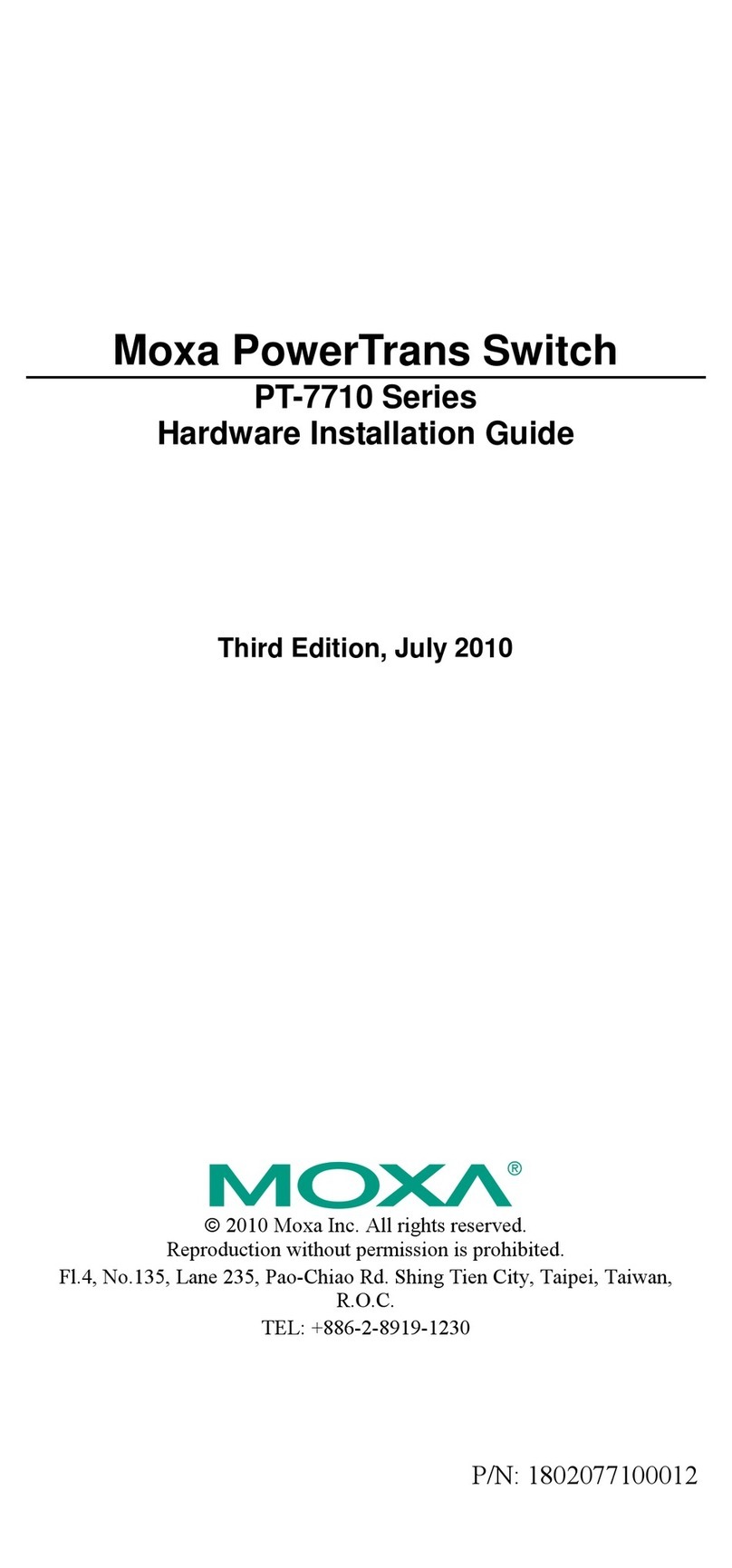
Moxa Technologies
Moxa Technologies PT-7710 Series Hardware installation guide

socomec
socomec ATyS r quick start guide

HP
HP ProCurve 1810G-8 Specifications
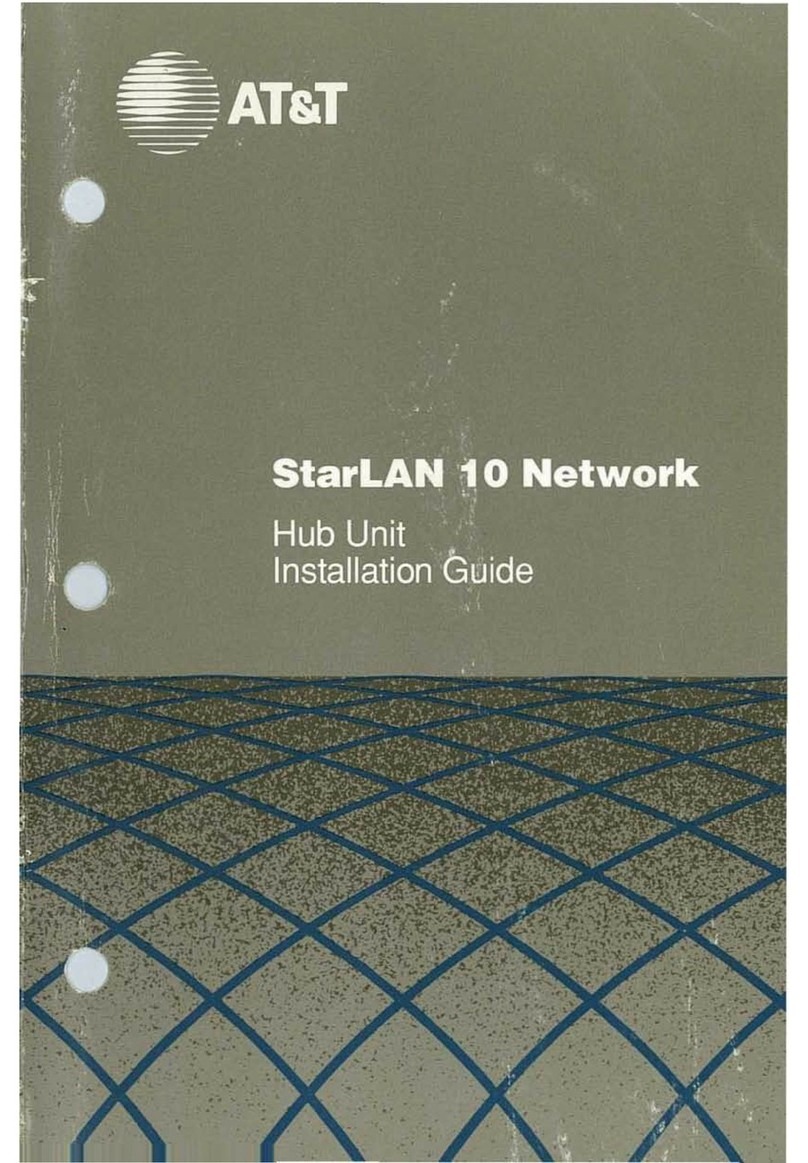
AT&T
AT&T StarLAN 10 installation guide
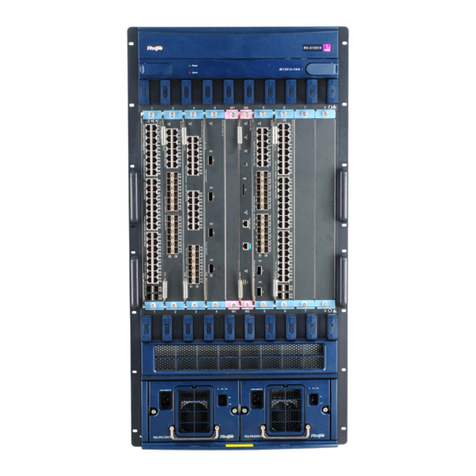
Ruijie Networks
Ruijie Networks RG-S12000 Series Quick installation guide
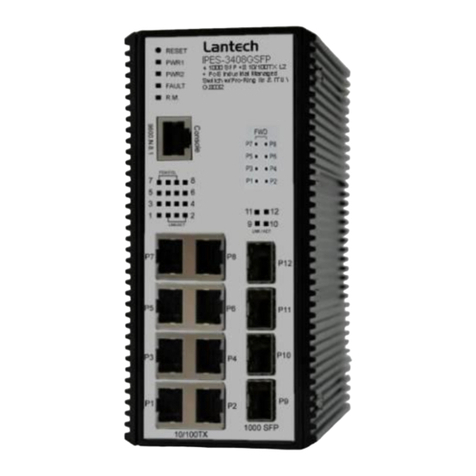
Lantech
Lantech IPES-3408GSFP user manual
